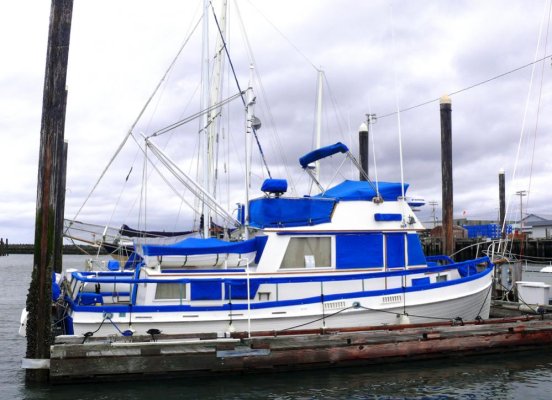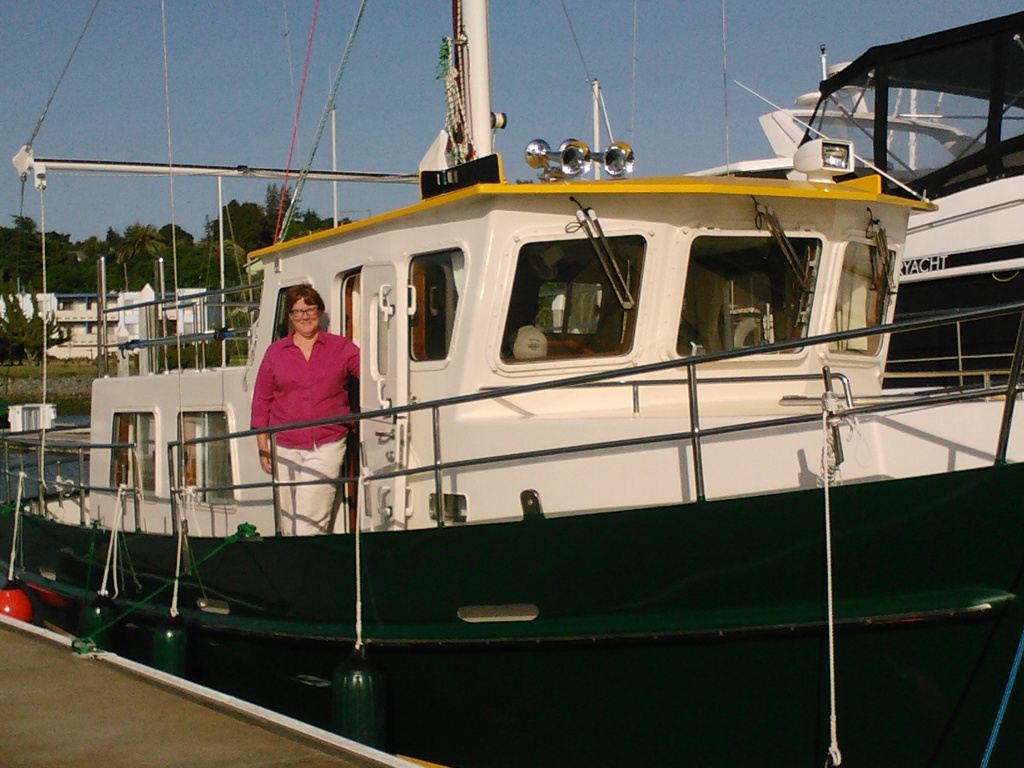BaltimoreLurker
Curmudgeon
- Joined
- Oct 8, 2007
- Messages
- 2,775
- Location
- USA
- Vessel Name
- Moon Dance
- Vessel Make
- 1974 34' Marine Trader Sedan
When we leave our slip we always discuss the wind direction as it relates to the order in which we release the dock lines. Last Saturday I learned, the hard way, to have the same discussion on the way back into the slip.
We do talk through the standard procedure: SO gets the mid-ship spring line first, then gets the bow lines inside the boat. By then I'm off the flybridge hooking up the stern lines. It usually works. Saturday it was fairly windy. I was so stinking proud of gauging the wind perfectly and sliding my (single engine!) boat exactly between the outer pilings without touching that I didn't notice my SO had dropped the windward bow line into the water. Near disaster. We were pushed way into the empty, neighboring slip. 4 lines hooked up but no way to get at the windward bow line to get re-centered. What a PITA! In my stress, no amount of jockeying the shifter and rudder would get the bow around. I couldn't move her an inch to windward by hauling on the spring line. Finally the wind dropped off and I could pull up on the spring line to get a boat hook on the bow line.
Lesson learned - prioritize the line handling according to the wind on the way into the slip too!
However, if our neighbor had been in their slip we could have bounced off them (fenders were in place) and gotten at our wayward bow line. Embarrassing, but much less stressful.
We do talk through the standard procedure: SO gets the mid-ship spring line first, then gets the bow lines inside the boat. By then I'm off the flybridge hooking up the stern lines. It usually works. Saturday it was fairly windy. I was so stinking proud of gauging the wind perfectly and sliding my (single engine!) boat exactly between the outer pilings without touching that I didn't notice my SO had dropped the windward bow line into the water. Near disaster. We were pushed way into the empty, neighboring slip. 4 lines hooked up but no way to get at the windward bow line to get re-centered. What a PITA! In my stress, no amount of jockeying the shifter and rudder would get the bow around. I couldn't move her an inch to windward by hauling on the spring line. Finally the wind dropped off and I could pull up on the spring line to get a boat hook on the bow line.
Lesson learned - prioritize the line handling according to the wind on the way into the slip too!

However, if our neighbor had been in their slip we could have bounced off them (fenders were in place) and gotten at our wayward bow line. Embarrassing, but much less stressful.






